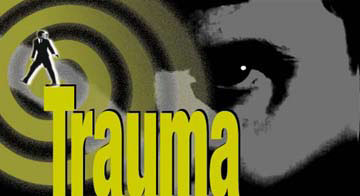 |
|
|
|
|
|
|
|
|
|
|
|
|
|
Official Site |
 |
 |
|||
 “TRAUMA” is a psychological chiller about Love, Grief and
Madness. It explores what happens when a bereaved man, unable to make
sense of his situation, retreats into a delusional world where he can
no longer distinguish between what is real and what is not. In
following Ben’s story, the film deals with many common themes—grief,
loneliness and denial. “TRAUMA” is a psychological chiller about Love, Grief and
Madness. It explores what happens when a bereaved man, unable to make
sense of his situation, retreats into a delusional world where he can
no longer distinguish between what is real and what is not. In
following Ben’s story, the film deals with many common themes—grief,
loneliness and denial. As Marc Evans the director sees it: “It’s a film that deals with phenomena which we understand as a generation…the loneliness of urban life in a city like London compared to the prevelance everywhere of media, celebrity magazines and reality television. Real life is something we sometimes neglect to take care of….” Awaking from a coma to discover his wife has been killed in a car accident, Ben’s (Colin Firth) world may as well have come to an end. A few weeks later, Ben is out of hospital and, attempting to rebuild his life, he moves home and is befriended by Charlotte (Mena Suvari), his beautiful, young neighbour. But all is not what it seems and, haunted by visions of his dead wife, Ben starts to lose his grip on reality… THE STORY (contains spoilers) 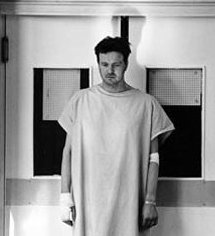 Frightened
and disorientated, Ben (Colin Firth) awakes from a coma in hospital to
discover that he has been in a car crash. When he learns that his
wife Elisa (Naomie Harris) was killed in the accident, his world might
as well have ended. To make things worse the outside world is obsessed
with the very public death of the pop star Lauren Parris. When
this death turns out to be murder media saturation ensues, leaving Ben
to deal with his grief alone. Frightened
and disorientated, Ben (Colin Firth) awakes from a coma in hospital to
discover that he has been in a car crash. When he learns that his
wife Elisa (Naomie Harris) was killed in the accident, his world might
as well have ended. To make things worse the outside world is obsessed
with the very public death of the pop star Lauren Parris. When
this death turns out to be murder media saturation ensues, leaving Ben
to deal with his grief alone.Out of hospital attempting to start a new life, Ben moves home and starts visiting Dr Manor, a shrink, whom it transpires saw him as a child after the death of his parents. He also picks up with an old friend Tommy (Tommy Flanagan), who takes pity on his grieving friend, particularly since Elisa’s family want nothing to do with him. Meanwhile, Ben is befriended by a beautiful, young neighbour Charlotte (Mena Suvari). One evening, she invites him to a public séance with a well- regarded medium, Petra (Brenda Fricker). Ben, who has begun to be haunted by eerie visions of Elisa, takes up the invitation. Ben’s life is about to take a darker turn, when out of the blue, Inspector Jackson (Ken Cranham) turns up at his flat to question him about the recent murder of world famous pop diva Lauren Parris. It transpires that Elisa was one of Lauren Parris’ dancers. Meanwhile Ben and Charlotte visit Petra again only for the medium to deliver the chilling news that she senses Elisa is still alive. In a state of shock, Ben visits Manor, who suggests that Charlotte has a damaging influence on him. Despite this, he takes Charlotte’s advice and visits Elisa’s sister Carrie who acts in a very hostile fashion to the medium’s news. Ben, disturbed by the strange things that are happening to him believes that he might be suffering from more than depression. In a session with Manor, the psychiatrist retorts that it is Charlotte who is the problem and confronts him with the idea that he has invented Charlotte as a response to his grief, repeating a pattern from his childhood. Rid himself of the delusion of Charlotte and his life will be back in order. But Ben fears the situation is more sinister and returns to Carrie’s house asking her to help him. By now he is convinced that he had something to do with Lauren Parris’ murder, a conviction furthered by the fact that he has spotted himself in the background of various newspaper photographs of Lauren. But Carrie reveals that he has misinterpreted the photos: Ben is appalled to discover that they show he was following Elisa, rather than Lauren. She also tells him that before the car accident, his relationship with Elisa had broken down and she was by then dating Lauren’s manager, Emery. 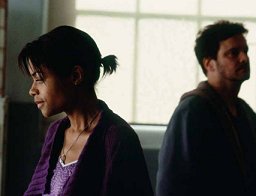 In
the midst of this new trauma, Ben’s life takes a further shocking turn
when Elisa, alive and well, turns up on his doorstep. Unable to
bare the deceit any longer, she explains that she had taken advantage
of his belief that she was dead to ensure that he would leave her
alone. Ben was mentally sick: the last days of their
marriage had been tormented by the fact that he was retreating into a
delusional world. He couldn’t admit that the only thing that had
died that fateful night was their relationship. In
the midst of this new trauma, Ben’s life takes a further shocking turn
when Elisa, alive and well, turns up on his doorstep. Unable to
bare the deceit any longer, she explains that she had taken advantage
of his belief that she was dead to ensure that he would leave her
alone. Ben was mentally sick: the last days of their
marriage had been tormented by the fact that he was retreating into a
delusional world. He couldn’t admit that the only thing that had
died that fateful night was their relationship. Clearing up the enigma of Elisa, Ben resolves that he must now turn his attention to Charlotte. After all, both Elisa and Manor are telling him he must admit to what is real or not. It is his big chance to act to save himself, maybe even get Elisa back. But for Ben, the truth turns out to have the most terrifying consequences. MAKING THE MOVIE — The idea Writer Richard Smith’s first film was a short called “Leonard”, the story of a man suffering from an obsessive- compulsive disorder who overcomes his condition to form a relationship with his long-lost son. Richard was interested in exploring mental health further, particularly the idea of a man unknowingly suffering from a mental illness and the effect that would have on him and the people around him. At the same time he had the idea to write a script about a man whose attempts to come to terms with his wife’s death are thwarted when a medium tells him she is still alive. Combining the two ideas, he began writing the screenplay, which would become “Trauma”. In January ’02, Richard submitted a treatment to Ministry of Fear, the horror label just set up by Anglo-Irish production company Little Bird. Head of the label, Lizzie Francke, immediately recognised the story’s potential, and that it embraced the label’s culture of character-driven psychological horror. Lizzie explains, “I liked the story of a person whose world is being unravelled, where their sense of reality is not quite in keeping with what’s going on around them. It had spooky potential.” Equally appealing was the story’s accessibility for an audience in dealing with universal themes such as grief and loneliness. Lizzie continues, “Most people have experienced grief in their lives but what happens when grief is unharnessed. In our story, this traumatic experience is pushed to the max.” Richard was commissioned to write the script. — Script to screen With the script in the works, Little Bird sought a director. Marc Evans, who has established a reputation for taking on disturbing material, particularly with his most recent release ‘My Little Eye’, was their first choice. Says Lizzie Francke: “Marc is a great director. Particularly with psychological horror, it is so important that the director has complete control of the material and a sense of creating atmosphere—both of which Marc is very good at.” Nicky Kentish Barnes, who was brought into to produce the film alongside Little Bird’s Jonathan Cavendish, adds: “The combination of Marc’s proven talent with the subject matter and his ability to inspire great trust from his actors to go as far as possible with their characters meant there was no doubt as to who should direct this movie…” Once on board, Marc began to work with Richard on the development of the script and Nicky recognises the benefit of that early collaboration, remarking, “They both inspired each other to go to greater depths.” 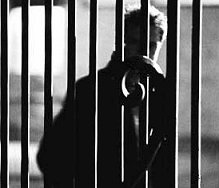 Marc was attracted to the story in that it belonged to a
tradition of films where an ordinary man finds himself in an
extraordinary situation, someone to whom disturbing things happen in an
urban and familiar environment. Says Marc, “The film twists and
turns but around something which is basically truthful…” He was
also inspired by the film’s relevance to real life in tackling such
themes as isolation and loneliness, grief and denial, and particularly
our obsession with celebrity. Marc acknowledges, “It’s a film
that deals with phenomena which we understand as a generation… The
loneliness of urban life in a city like London compared to the
prevalence everywhere of media, celebrity magazines, and reality
television. Real life is something we sometimes neglect to take
care of…” Marc was attracted to the story in that it belonged to a
tradition of films where an ordinary man finds himself in an
extraordinary situation, someone to whom disturbing things happen in an
urban and familiar environment. Says Marc, “The film twists and
turns but around something which is basically truthful…” He was
also inspired by the film’s relevance to real life in tackling such
themes as isolation and loneliness, grief and denial, and particularly
our obsession with celebrity. Marc acknowledges, “It’s a film
that deals with phenomena which we understand as a generation… The
loneliness of urban life in a city like London compared to the
prevalence everywhere of media, celebrity magazines, and reality
television. Real life is something we sometimes neglect to take
care of…” Ben’s story takes place against the backdrop of a celebrity death, pop diva Lauren Parris. Bombarded by media images, the world unite in mourning her death, Ben mourns his wife alone. His feelings of isolation are increased, his situation reduced to insignificance compared to the enormity of the news of Lauren Parris’ death. One of the biggest challenges for Marc was creating a world for a fictitious celebrity that was credible. During the preproduction phase of the film, a team of musicians, stylists, photographers, and designers worked with singer/actress Alison David and invented a life and a body of work for Lauren Parris. It was important Lauren’s songs sound familiar to an audience to ensure her credibility so existing songs were covered rather than new ones created. Producing music promos and media coverage completed the task. Says Nicky, “You can’t cheat the audience at any stage, you want them to be with you all the way, and if anything’s not credible, you’ll lose them." — Cast and characters 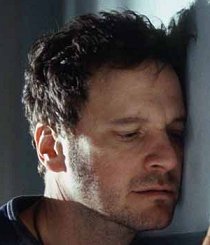 In
such dark territory, it is essential the audience empathise with the
central character. The filmmakers were looking for an actor who
embodied the essence of an ordinary man, yet could really stir an
audience at the same time. That actor was Colin
Firth. Marc comments, “I have so much faith in Colin as an
actor. Technically, he is brilliant and he instinctively
understood the character… I find him totally compelling.”
He had worked with Colin on a Ruth Rendell adaptation some ten years
prior and welcomed the opportunity to work with him again. Marc
continues, “We chose Colin because I think he is somebody an audience
can identify with, and will want to survive this fate that befalls
him.” Nicky adds, “In spite of his desperate situation, Colin’s
portrayal of Ben gives the character a pervasive sense of hope which
will have the audience rooting for him.” In
such dark territory, it is essential the audience empathise with the
central character. The filmmakers were looking for an actor who
embodied the essence of an ordinary man, yet could really stir an
audience at the same time. That actor was Colin
Firth. Marc comments, “I have so much faith in Colin as an
actor. Technically, he is brilliant and he instinctively
understood the character… I find him totally compelling.”
He had worked with Colin on a Ruth Rendell adaptation some ten years
prior and welcomed the opportunity to work with him again. Marc
continues, “We chose Colin because I think he is somebody an audience
can identify with, and will want to survive this fate that befalls
him.” Nicky adds, “In spite of his desperate situation, Colin’s
portrayal of Ben gives the character a pervasive sense of hope which
will have the audience rooting for him.” The character of Ben is a return for Colin to quirkier roles he played earlier in his career ‘pre boots and jodhpurs’ and an opportunity to explore a man’s darker side than he had been able to do in the romantic roles for which he has become well known. He was also keen to team up again with Marc, and Jonathan Cavendish who had produced “Bridget Jones’s Diary”. Says Colin, “It’s an incredibly lonely story. Ben is very isolated and hard to reach.” Yet he believes his behaviour is perfectly understandable in the world Ben inhabits: “If you’re walking down spooky corridors and something jumped out, you’d jump too. If your wife died next to you in a car accident, and you saw her three days later, you’d freak out as well. These things are happening to him, he’d be mad if he wasn’t freaked out”. He continues, “But Ben’s world is so lonely he doesn’t have anyone to measure his reactions against…” Marc concurs: “Left to his own devices, without people around to support him, Ben goes further into this corner of insanity and doesn’t realise how far adrift from the normal he’s got.” Playing the character took its toll on Colin. He appears in almost every scene, distraught and dishevelled, and admits, “It’s been fascinating getting inside his head, but I do go home feeling a little off-centre.” Yet despite the dark subject matter, the set was a happy place for him to be, not least of all because of his relationship with Marc. “His personality is inconsistent with how dark the work is. He is the most even-keeled, approachable, amusing, easy-to-be with person you could possibly imagine. I have never, ever seen a dark side to him—except on the screen.” Colin also finds working with Marc an enormously collaborative experience: “It’s a sign of Marc’s security and imagination that he is prepared to take ideas from others and allow them to inspire him. Marc thrives on that.” He continues, “However, his vision is very, very strong.” The filmmakers had very specific ideas about casting Charlotte and in Mena Suvari they found the embodiment of their perception. Charlotte is the one person who brings light into Ben’s life. Marc observes, “Mena is like an angel, she exudes lights and serenity. She acts with a fantastic simplicity and truth that seems unembellished and unmediated. She has this ability to just ‘be’ in the film.” He continues: “She seems a perfect foil for a complicated character like Ben. She brings a great beauty to it too. And the combination is great because Ben starts doubting who she is and she seems too good to be true and maybe she is…” 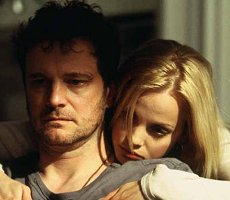 Mena
was thrilled to join the project, moved by its originality and an
interest in ‘things that are dark and unique’. She had seen ‘My
Little Eye’ and says of Marc, “I just loved his style and what he
brought to that film. I could see so much that he would do with
this film.” On set, she found him very supportive. “He’s
just there for you. He understands and makes decisions
accordingly… The cameras he uses, the angles he shoots from, the way he
does everything has been so exciting.” An understanding of the
practise and philosophy of reiki informed Mena’s performance. She
spent several weeks in London before the shoot preparing for the role,
even attending séances to understand a medium’s work. She
says of Charlotte, “She’s somebody who gives and gives—in
the field she works in—emotionally
and physically. And I don’t think she’s really been given much
back so she’s in a position to empathise with Ben’s loneliness.
Both of them are lost in a way…” Mena
was thrilled to join the project, moved by its originality and an
interest in ‘things that are dark and unique’. She had seen ‘My
Little Eye’ and says of Marc, “I just loved his style and what he
brought to that film. I could see so much that he would do with
this film.” On set, she found him very supportive. “He’s
just there for you. He understands and makes decisions
accordingly… The cameras he uses, the angles he shoots from, the way he
does everything has been so exciting.” An understanding of the
practise and philosophy of reiki informed Mena’s performance. She
spent several weeks in London before the shoot preparing for the role,
even attending séances to understand a medium’s work. She
says of Charlotte, “She’s somebody who gives and gives—in
the field she works in—emotionally
and physically. And I don’t think she’s really been given much
back so she’s in a position to empathise with Ben’s loneliness.
Both of them are lost in a way…” With the leads in place, the filmmakers rounded out their supporting cast with Naomie Harris, Tommy Flanagan, Sean Harris, Brenda Fricker, and Ken Cranham, and just fourteen months after Richard delivered a treatment to Little Bird, Trauma began its eight-week shoot in the Isle of Man and London. — Sets and locations 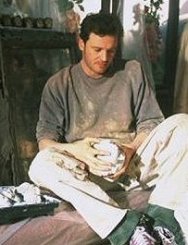 One
of the main themes explored in Trauma is the loneliness of urban life
in a big city. The film is set in London’s East End though it is
not the romanticised view of London with which cinema audiences are
familiar. The combination of a muted colour palette, harsh
textures and exteriors rarely seen in the sunshine give London both
appearance and atmosphere of an alienating place to live. One
of the main themes explored in Trauma is the loneliness of urban life
in a big city. The film is set in London’s East End though it is
not the romanticised view of London with which cinema audiences are
familiar. The combination of a muted colour palette, harsh
textures and exteriors rarely seen in the sunshine give London both
appearance and atmosphere of an alienating place to live. Much of the screen action takes place in Ben’s apartment, built on a stage in the Isle of Man Studios. The apartment is converted from an old hospital and, in creating the space, production designer Crispian Sallis approached the design as an actual conversion, deliberately ‘retaining’ such elements as column radiators, exposed piping, linoleums, and twin coloured walls to create a strange and unsettling sanatorium-like surrounding in which Ben’s hallucinatory world unfolds. The camera reveals a strange mixture of objects about the apartment, which tell us a lot about Ben. “He has a lot of time on his hands and places things incredibly carefully. I think everything is done for a reason,” says Crispian: “It’s very much a junkyard apartment for a man who’s exploring himself and the world. An amalgam of found parts, found objects… I love bringing together things from disparate worlds, disparate cultures, some expensive, some cheap that don’t in themselves seem incredibly special but together create a lair, a world for Ben that’s very chosen and meticulous.” Film enthusiasts may notice that Ben’s world—wherever he goes—is bound by the repetition of certain textures and objects. Crispian explains: “We want to see Ben walk down the road and see things, spot things, pass by things that are either identical or very similar which will bind his world. It’s sinister to have that ‘haven’t I seen that somewhere before’ feeling, a sense of deja-vu.” His new apartment for example, a converted hospital ward bears more than a passing resemblance to the hospital ward in which he wakes up. Marc relied on the brilliance of director of photography John Mathieson to ramp up Ben’s madness with creative lens work, “John is so inventive with the camera, telling the story through distorted opticals and speed-changes. Techniques I first saw him use in ‘Love and the Devil’ a film that has stayed with me” John’s camerawork can make the ordinary seem strange and turn Ben’s world into a hall of mirrors. 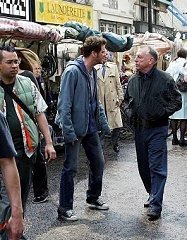 In London, the filmmakers found great locations in order
to create their own version of the East End, logistically easier for
film crews including The old Midland Hotel, now called St Pancras
Chambers, a Grade I listed Gothic style building which fronts St
Pancras Station. In its heyday the Midland Grand Hotel was one of
the most opulent in London but, essentially unmaintained until the
1990s, it provided an eerie backdrop for the converted hospital
building in which Ben’s apartment is located. In London, the filmmakers found great locations in order
to create their own version of the East End, logistically easier for
film crews including The old Midland Hotel, now called St Pancras
Chambers, a Grade I listed Gothic style building which fronts St
Pancras Station. In its heyday the Midland Grand Hotel was one of
the most opulent in London but, essentially unmaintained until the
1990s, it provided an eerie backdrop for the converted hospital
building in which Ben’s apartment is located. Deep in its bowels, the design team built the Old Morgue—originally part of the hospital—a chilling setting for the cast and crew who spent several days working in the dark, damp location. Other locations used included Haggerston Park, one of the few East End locations used by the filmmakers; the Horniman Museum in South East London; and Lower Marsh—an historic market street in London’s Waterloo—which continued to be operational during the crew’s three-day shoot providing great interest for public and press.
|
|
club, group or community's photo album. Thank you. |

|